South Korea muscles in on global arms trade
Launch of new fighter jet – to enormous fanfare – underlines Seoul’s commitment to controversial industry.

Seoul, South Korea – South Korea celebrated its entry into the “elite group of fighter jet producers” this month, unveiling its domestically-developed KF-21 Boramae in a blaze of lights and pop music and a glowing endorsement from President Moon Jae-in.
Moon lauded the technology, economic benefits, military capabilities, and national prestige the development of the plane represented, a perspective largely shared in most reporting of the multibillion-dollar project to develop a multi-role fighter jet.
Keep reading
list of 4 itemsUS: We we will work in ‘lockstep’ with Japan, S Korea on N Korea
N Korea accuses UN of ‘double standard’ on missile tests
Will the US take a new approach to North Korea?
Lost in the fanfare was any criticism of an arms industry known for runaway budgets and a weapons trade contributing to destabilising regions or states in conflict. Questions also surround the contribution a regional arms race may have on South Korea’s national security.
South Korea decided to develop its own advanced fighter jet more than 20 years ago under former president Kim Dae-jung, who won the Nobel Peace Prize for his so-called Sunshine Policy that aimed to ease tensions with the North.
After several feasibility studies and the wrangling of technology transfers from the United States, development began, in earnest, in 2016. At the April 9 unveiling, President Moon proudly detailed much of the tech featured on the new plane, the “Fighting Hawk”, currently a prototype.
“It’s ‘AESA radar’ and ‘Infrared Search and Track System’ can quickly detect enemy aircraft and missiles. Its ‘Electro Optical Targeting Pod’ can precisely zero in on ground targets,” Moon told the dignitaries assembled in Sacheon in the country’s southeast.
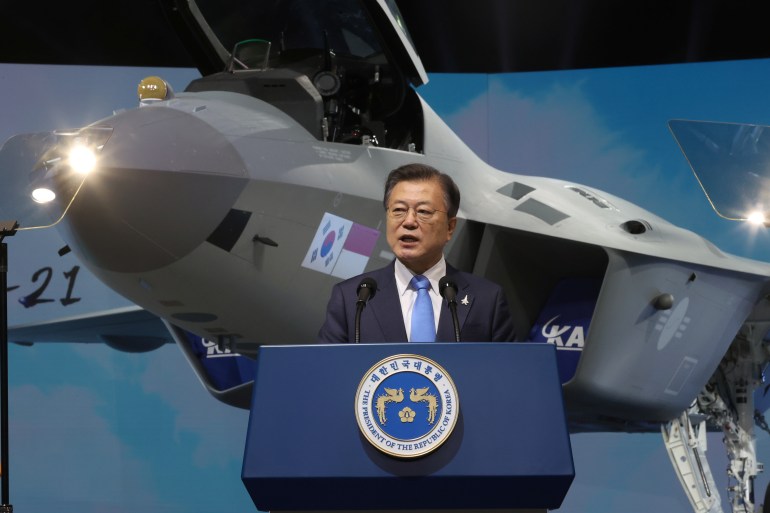
He explicitly linked the development of the fighter to national prestige.
“Today, we have achieved the dream of our forebears, ‘Let us protect our skies with our own hands.’ It is truly overwhelming,” said President Moon.
‘Crown jewel’
Once it goes into production in around 2026 – after six prototypes conduct more than 2,000 test flights – the fighter will be a replacement for the country’s ageing fleet of F-4s and F-5s to work alongside the incoming 5th generation F-35s, and its existing fleet of F-15s and F-16s.
“These kinds of weapons and advanced combat aircraft are presented with a great deal of show … claims about their capabilities, and a clear narrative of ‘look this is really high-tech, this is really important technology,’” Pieter Wezeman of the Stockholm International Peace Research Institute’s (SIPRI), told Al Jazeera.
“It’s creating the image of this kind of being the crown jewel,” added Wezeman, who is Senior Researcher of arms and military expenditures.
Moon also touted the economic benefits of the project.
Some 700 local businesses have been involved in the development, creating 12,000 of what the president described as “decent” jobs. Mass production will add 100,000 employment opportunities, and generate more than $5 billion for the economy.
“The KF-21 project will become a driving force that will make the aviation industry an undeniable future growth engine of the Republic of Korea,” Moon said.
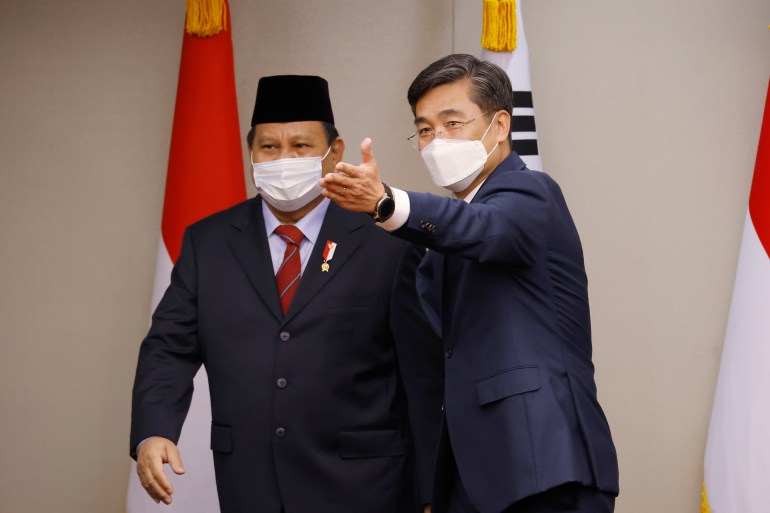
But jewels cost money and critics say the fighter may not reap the benefits outlined by President Moon.
Critics point out the plane’s development alone cost about $7 billion, with an estimated $9 billion more needed to produce the 120 fighter jets planned to be manufactured and deployed until 2032. Industry estimates have warned both development and construction costs could rise significantly.
While countries are capable of independently financing small arms and weapons systems for domestic purposes, big-ticket items require partner nations to make economic sense.
The US-led F-35 Joint Strike Fighter project involves eight countries, with South Korea set to purchase 60 planes, some of which have already been deployed.
Lockheed Martin was approved to transfer 21 key technologies to South Korea after Seoul signed the order, which Washington had also linked to its commitment to its alliance with South Korea – a pressure tactic speculated in the press and later formalised on related security issues by former US President Donald Trump.
For its F-21 “Fighting Hawk”, South Korea had Indonesia sign up to shoulder 20 percent of the development budget in exchange for 50 planes and technology transfers. The Southeast Asian nation is behind on its payments, however, according to media reports.
“As soon as you get to the larger items, whether it’s the combat aircraft, air defence systems, or submarines, the domestic market is unlikely to be able to sustain it in terms of economies of scale. You need to produce more to make it affordable,” explained SIPRI’s Wezeman.
Sixth-biggest exporter
South Korea has been on a path to become a significant arms producer and supplier for 20 years, rising from the 31st ranked arms exporting country in 2000, to number six in 2020, according to the SIPRI arms transfer database.
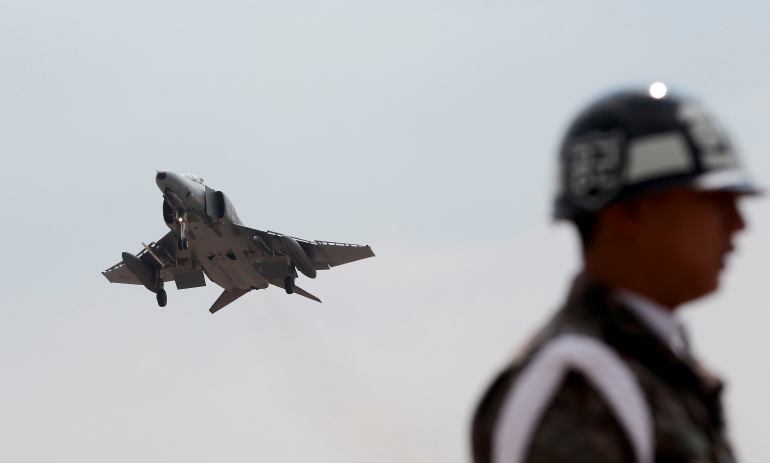
Its trade involves armoured vehicles, tanks and fighter jet trainers, which are sold, along with smaller ticket items, such as cluster bombs and rocket launchers, to a wide variety of countries.
Moon has indicated South Korea plans to export the KF-21 to potential buyers including Iraq, Malaysia, Peru, Philippines, Qatar, Senegal, and Thailand.
Defence experts noted that when the Myanmar Navy went to collect a group of more than 1,000 nationals being deported by Malaysia earlier this year, the ship that docked in the western port of Lumut was the UMS Moattama, which was completed in a South Korean shipyard in December 2019.
The growth in the arms trade has come despite South Korea being one of more than 100 countries to have signed and ratified the 2014 Arms Control Treaty, which “aims to reduce human suffering caused by illegal and irresponsible arms transfers …”
Some countries, such as Germany, have already suspended arms exports to Saudi Arabia over the conflict in Yemen, but there is no sign that South Korea plans to follow suit.
Its Raybolt anti-tank rocket launcher has featured prominently in the fighting even as Yemen has turned into what the United Nations has said is the world’s worst humanitarian crisis.
South Korea in March announced it would suspend military exports to Myanmar, arms which had previously included military trucks and tear gas, according to South Korea’s Yonhap news agency.
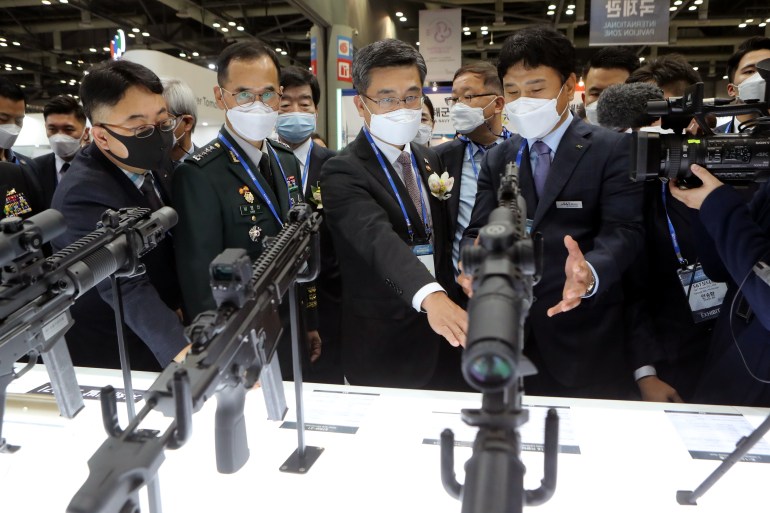
The introduction of South Korea’s new fighter jet on the international market may also spur more spending by middling countries that cannot afford similar offerings from the US, Russia and France.
“It creates a higher level of supply … and it becomes more attractive and cheaper to buy arms, which then contributes to more arms acquisition competition between states,” said Wezeman.
Consequences for peace-building
East Asia has seen military expenditures rising for ten consecutive years from 2010 through 2019, according to SIPRI, and critics of the fighter question the contribution of South Korea’s massive arms buildup over the past two decades to national security, and in particular, in generating an atmosphere conducive to peacebuilding on the Korean Peninsula.
The 1950-53 Korean War ended in an armistice, not a peace treaty, and North Korea is still considered the country’s primary security threat.
North Korea’s conventional arms lag far behind South Korea’s, with Seoul’s annual military spending of almost $50 billion, more than the North’s entire GDP, explains Hwang Soo-young, of the Center for Peace and Disarmament at the People’s Solidarity for Participatory Democracy, South Korea’s largest civil society organisation.
Some say this conventional arms disparity is one of the motivations for Pyongyang to continue developing its weapons of mass destruction.
“As South Korea strengthens its conventional power, North Korea will have no choice but to stick to asymmetric power such as nuclear weapons and missiles,” Hwang told Al Jazeera.
South Korea also faces what is known as the “security dilemma” where a country’s spending on advanced weapons actually puts national security at risk by prompting competing countries to respond, and deploy ever more advanced and expensive weapons systems that reduce the time frame for verification and reflection as armed conflict develops.
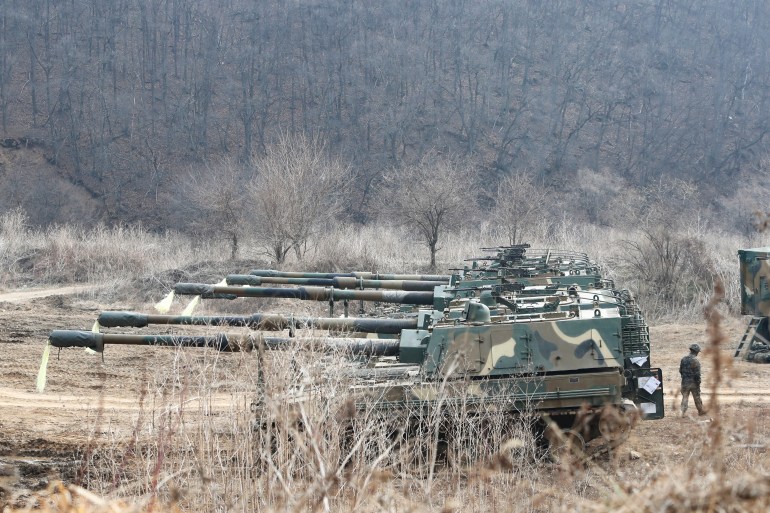
But for peace activists in Seoul the primary concern is the effect South Korea’s burgeoning military industrial complex will have on North Korea and the potential for inter-Korean rapprochement.
“South Korea’s national security strategy should end the division and confrontation between the two Koreas, denuclearise the Korean peninsula and establish a peace regime through a peace agreement,” PeaceOne researcher-activist Oh Mi-jeong told Al Jazeera, condemning the stealthy nature of the plane.
“That cannot be done with weapons designed for pre-emptive strikes against North Korea and a regional arms race. South Korea already has enough fighter jets.”